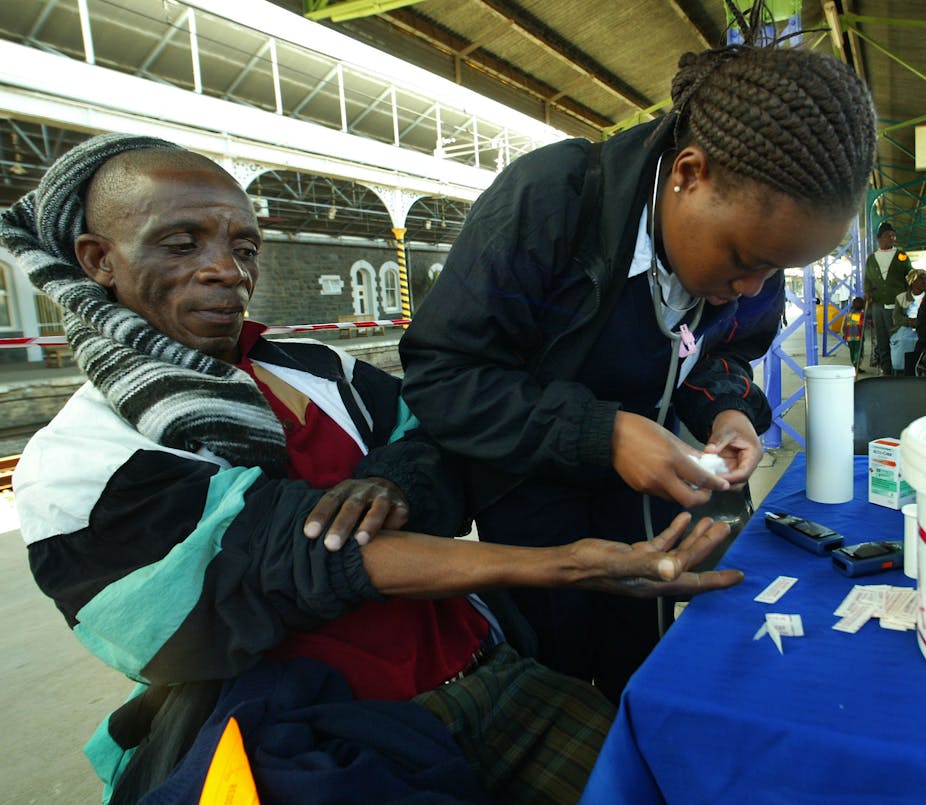Rural communities in South Africa, similar to other countries worldwide, have less access to health care. Facilities are limited, the information insufficient and there are fewer health professionals to attend to the population, which results in them having a poorer health status. It is estimated that in South Africa over 70% of doctors work in the private sector, leaving just over 27% to serve the vast majority in the public sector. The unequal health care distribution favours richer people, even though illness is greater for poorer people.
To improve the availability of health professionals, particularly for rural communities, in 2008 the South African National Department of Health created a clinical associates position as part of the mid-level health worker programme.
Clinical associates are competent health professionals with the necessary knowledge, skills, and attitudes to be part of a district hospital clinical team, which is accessed as part of community based primary health care services in provinces. They function under the supervision of doctors and can do certain procedures; assess patients in casualty and emergency wards and in other wards and theatres. They are there to lighten the workload of their teams. Their presence means that doctors are able to do outreach work in rural clinics.
But seven years after the programme was set up, despite anecdotal positive responses from hospital staff about the assistance they provide, the clinical associate programme has not yielded the number of mid-level health care workers it envisioned.
Stifled by financial constraints
The programme has faced challenges, particularly around its financing. Initially 1350 were to be trained and sent in groups of five to over 200 district hospitals across the country. But by 2014, when the third set of Clinical Associates was to graduate, the Health Professions Council of South Africa had only registered 369).
Securing donor funding at the onset of the programme to create the curriculum was challenging, exacerbated by miscommunication between the Health Ministry and the National Treasury about the programme’s special allocations. A shortfall of funding to the universities also hampered targets being met.
The universities have had to stretch existing resources for teaching to the maximum because subsidies from the Department of Education could only be accessed once the clinical associates had graduated.
Hospitals have also been struggling to finance the training costs, including teaching posts. The funding situation has not encouraged universities to scale up production. And because there have been so few clinical associates in practice, the full impact of the programme has not yet be established.
A tailor-made training programme
Although clinical associates are trained at medical schools and regulated by the same body as the medical doctors, they are not doctors. Their training differs from the doctors in a number of ways. Their degree is three years long compared to the six-year medical degree for fully fledged doctors. They get trained in the wards while learning the theory of their profession. On the other hand, doctors do their in-service training after completion of their studies.
All clinical associates have the same national curriculum and exam, ensuring that they are exposed to comparable standard across the country. Some local flexibility and innovation during training has been built in at the different universities.
Several features of the clinical associates training programme contributed to its initial success.
Training alongside medical doctors fosters synergy between the clinical associates and doctors because they have to work together. Because their work has to be supervised by doctors, they are assured of adequate support and the quality of patient care is maintained.
The scope of practice for clinical associates is tailored for the district hospital’s needs and context. It emphasises general skills but responds to the district hospital patient profile.
The programme is addressing another major challenge facing medical schools: how to attract students from rural areas. Studies have repeatedly shown the background of the student as the main factor for rural practice retention.
The programme is designed to recruit students from rural settings and train them to work in those areas, giving marginalised communities a new way to enter the medical field. Staff retention in rural areas has been enhanced and patients get to be treated by health care workers who can speak their languages.
The benefits of clinical associates doing service-based learning is that they become familiar with local health circumstances and immediately relieve the workload of the staff they shadow. However the full benefits of the programme will only be established once adequate number of clinical associates have qualified.
In the United States, where the physician assistants programme has been running since the 1960s, there are around 90 000 assistants operating in 50 states.
Keeping the programme going
To sustain the early achievements in the clinical associates programme, more must be produced in greater numbers. Retention might also be a problem. The apparent poor working conditions and management systems that, in the past, have contributed to poor staff retention in rural settings especially, might stifle the aspirations of the clinical associates who may still seek to grow professionally.
There have also been tensions between clinical associates and existing health professionals around what the clinical associates are allowed to do. One challenge is that the Pharmacy Council had stopped clinical associates from prescribing medicines.
But the most concerning challenge is that, given the known health personnel shortage in South Africa, there is a risk that doctors may not be available to supervise the clinical associates. This could result in clinical associates not functioning to their full capacity.
The clinical associate program has the potential to improve the quality of care especially for poor, marginalised and rural communities. However the success of the programme requires strong district health systems, good health management and enough medical doctors to supervise them.

